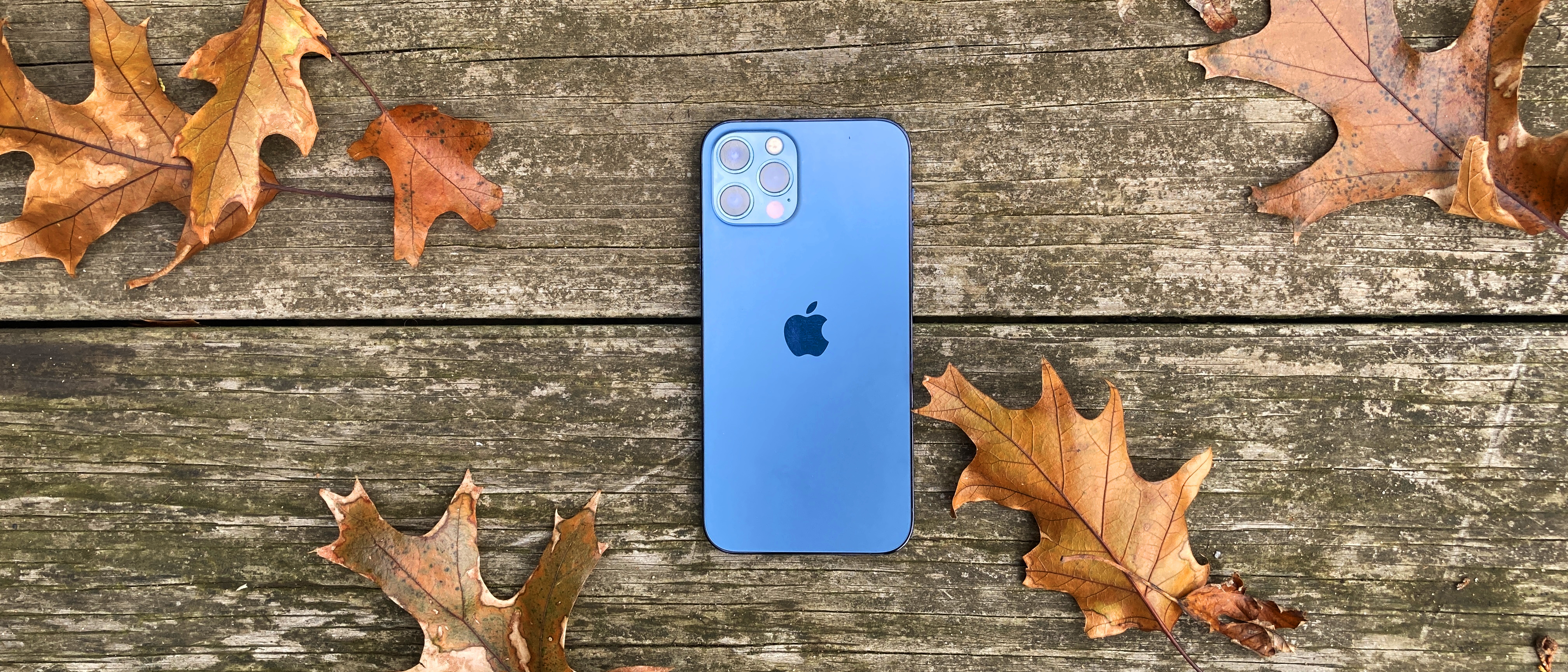Laptop Mag Verdict
The iPhone 12 Pro offers badass AR experiences thanks to its LiDAR scanner, but the absence of a power adapter forebodes a future of portless smartphones.
Pros
- +
LiDAR scanner for AR fun
- +
Gorgeous Pacific Blue chassis
- +
Ergonomic, flat-edge design
- +
Easy Dolby Vision video recording/editing
- +
Lightning-fast A14 bionic chip
Cons
- -
Power adapter not included
- -
Mediocre battery life
- -
Unattractive notch
Why you can trust Laptop Mag
The iPhone 12 Pro is a tantalizing time traveler from the future with a profound message: “The future of smartphones is LiDAR, 5G and Dolby Vision — you won’t make much use of them now, but trust me, they’re going to explode into popularity!”
The iPhone 12 Pro is outfitted with a wealth of avante-garde features, including a depth-perceiving LiDAR scanner, Dolby Vision HDR for more colorful videos and 5G for high-speed downloads, but there are a few caveats. The scope of fun you can have with LiDAR is limited, most phones can’t “recognize” your Dolby Vision HDR content, and 5G still isn’t available in many regions.
Price: $1,299
OS: iOS 14.1
Display: 6.1-inch Super Retina XDR
CPU: A14 Bionic chip
RAM: 6GB
Rear cameras: 12MP wide (ƒ/1.6); 12MP telephoto (ƒ/2.0); 12MP ultrawide (ƒ/2.4)
Front camera: 12 MP (f/2.2)
Storage: 512GB
Battery: 8:15
Size: 5.78 x 2.82 x 0.29 inches
Weight: 0.4 pounds

These hindrances, though, aren’t Apple’s fault — the trailblazing iPhone 12 Pro is simply too ahead of its time. Should these technologies become more prevalent, iPhone 12 Pro owners will smugly say, “Ha! We’ve been ready!”
However, Apple’s future-oriented nature forces us to stomach some unsettling changes that make us squirm, such as the tech giant’s power-adapter banishment — a move that forebodes a future of portless iPhones (gasp!).
The iPhone 12 Pro is for fearless mavericks who aren’t afraid to dive head-first into an Apple-paved future, but I can also empathize with those who are leery about investing in the iPhone 12 Pro.
iPhone 12 Pro price and configurations
The iPhone 12 Pro has a starting price of $999, and it comes with the world’s fastest smartphone CPU/GPU, the blisteringly A14 bionic chip. It also sports 6GB of RAM and 128GB of storage.
The iPhone 12 Pro I reviewed costs $1,299; this model bumps up storage to 512GB. The iPhone 12 Pro comes in four colors: Silver, Graphite, Gold, and my favorite, Pacific Blue.
Sign up to receive The Snapshot, a free special dispatch from Laptop Mag, in your inbox.
iPhone 12 Pro design
The exquisite Pacific Blue that drapes my iPhone 12 Pro looks like a color that was crafted by God himself. It’s not too bright nor too dark — it’s a rich, sophisticated hue that looks like the perfect mélange of navy and royal blue. Perhaps I’m hungry, but the iPhone 12 Pro looks like a chocolate bar wrapped in premium blue foil. Chef’s kiss!
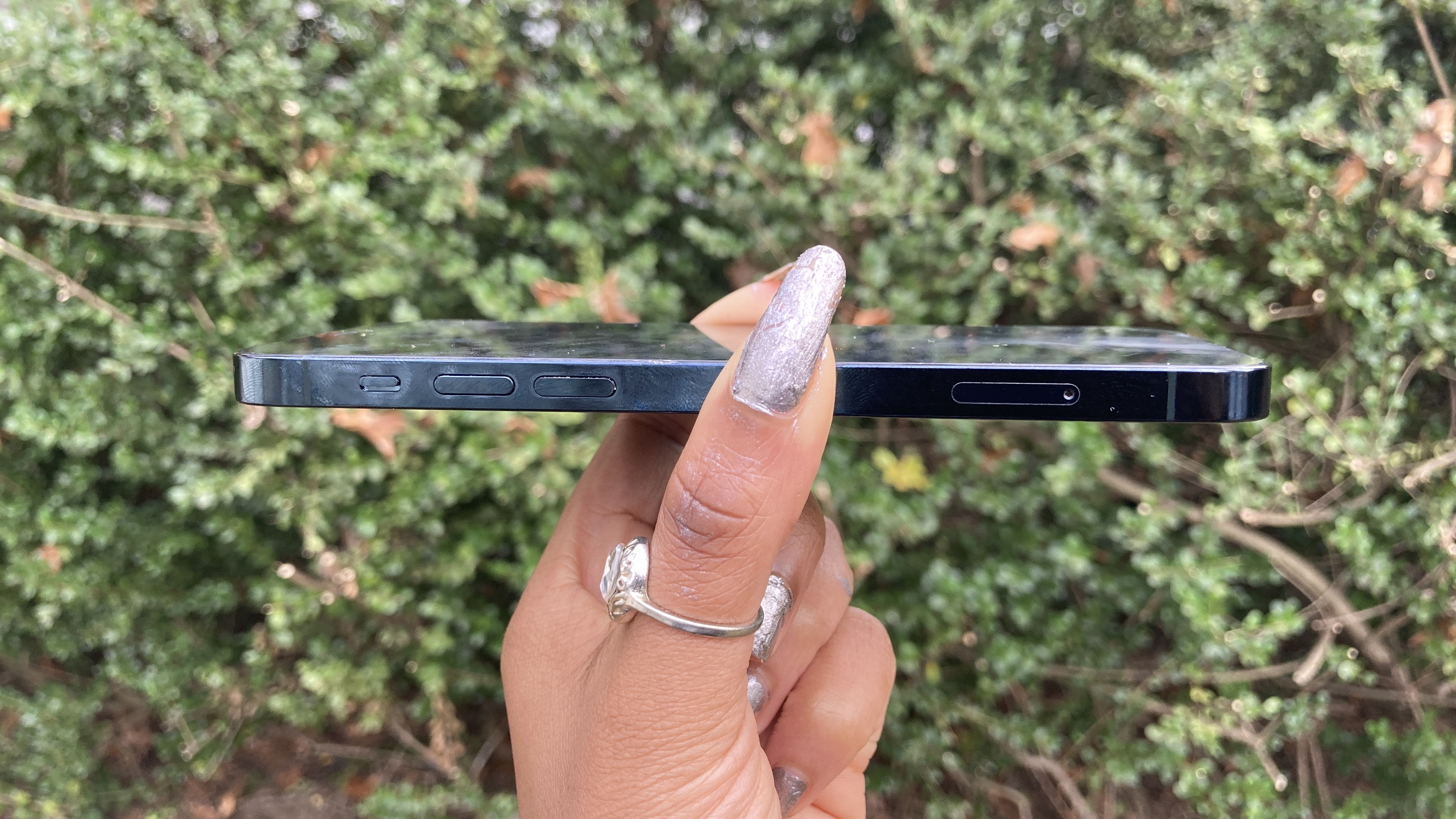
Apple ditched the rounded-edge design it has maintained since the iPhone 6 and retrogressed to the flat-edge look featured on the iPhone 5. I love it! Holding the iPhone 12 Pro is far more comfortable and grippable than yesteryear’s rounded-edge form factor. The flat-edge design also allows the device to stand on its own.
The back of the iPhone 12 Pro features a matte-glass coating that contrasts beautifully with the glossy, stainless-steel edges. While the back is fingerprint resistant, I can’t say the same for the edges. On the upper-left corner of the Pro, you’ll find a tell-tale feature that screams “this is an iPhone!” — a three-camera module with a LiDAR scanner.
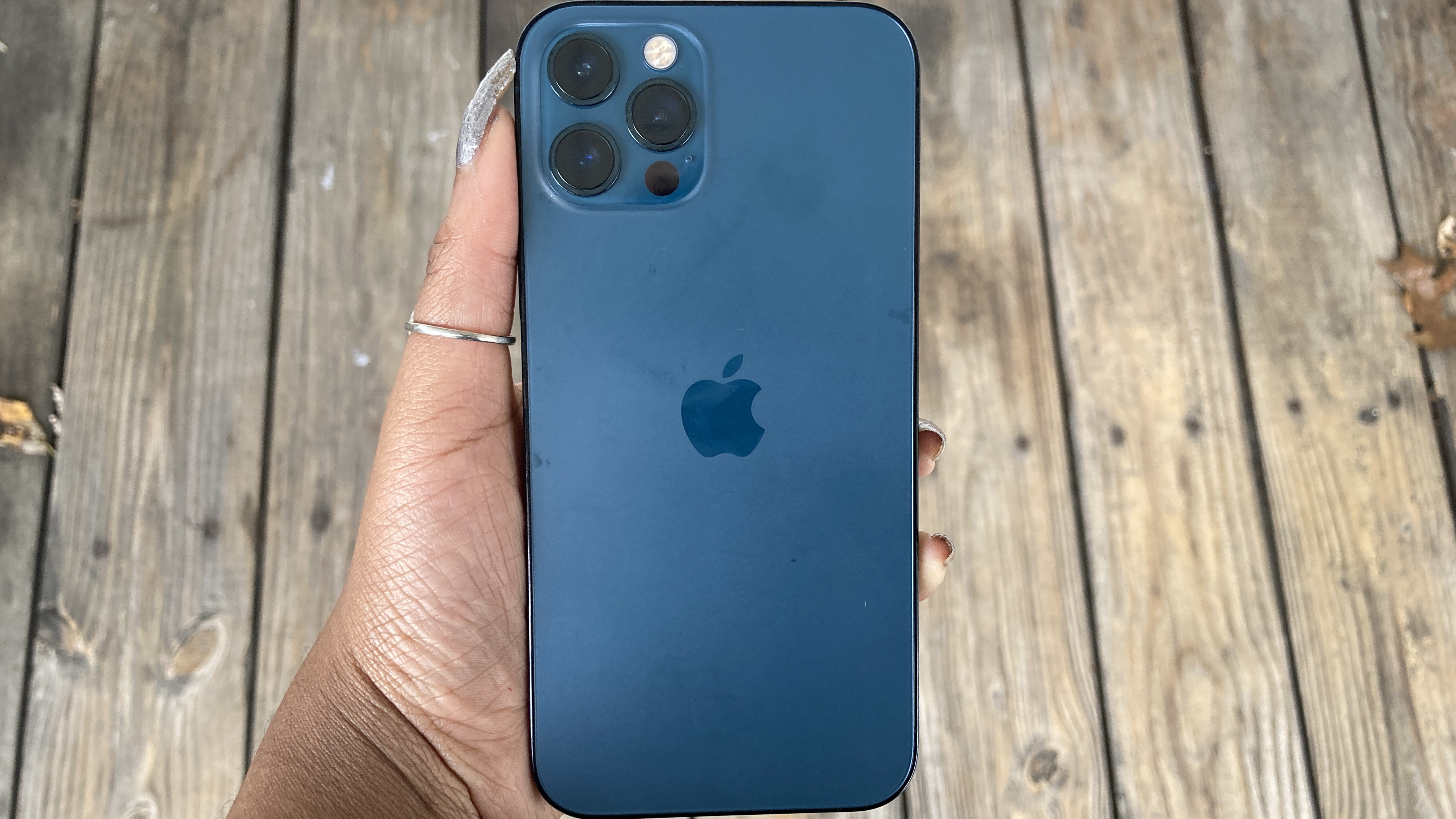
The bezels on the 6.1-inch, Super Retina XDR, OLED display are super slim, but the notch on the top of the iPhone 12 Pro is unsightly. Flagship Android phones such as the Samsung Galaxy Note 20 Ultra are notch-less, providing a gorgeous, ultra-high screen-to-body ratio. I wish Apple did the same for the iPhone 12 series. On the plus side, the hideous notch houses some beautiful internals, including a 12MP selfie camera that features best-in-class facial recognition.
On the left side, you’ll find two volume buttons and the silencer button. On the right side is a side button that can be used to wake up your device and activate Siri.
The iPhone 12 Pro (0.29 inches, 0.41 pounds) is slimmer than the iPhone 11 Pro (0.32 inches, 0.41 pounds), but it shares the same weight as its predecessor. When it comes to Android rivals, the iPhone 12 Pro is thinner and lighter than the Samsung Galaxy Note 20 Ultra (0.32 inches, 0.45 pounds). The Pixel 5 (0.3 inches, 0.3 pounds) is almost as thin as the 12 Pro, but it is lighter.
iPhone 12 Pro display
The displays on the iPhone 12 lineup are the brightest and sharpest in Apple’s smartphone history. The Pro is adorned with a 6.1-inch, 2532-by-1170-pixel OLED, Super Retina XDR display. I do wish Apple packed the iPhone 12 Pro with a 120Hz refresh-rate display to compete with high-end Android rivals, but perhaps the 60Hz display is a blessing in disguise — high refresh-rate screens can ravenously eat up your battery life.
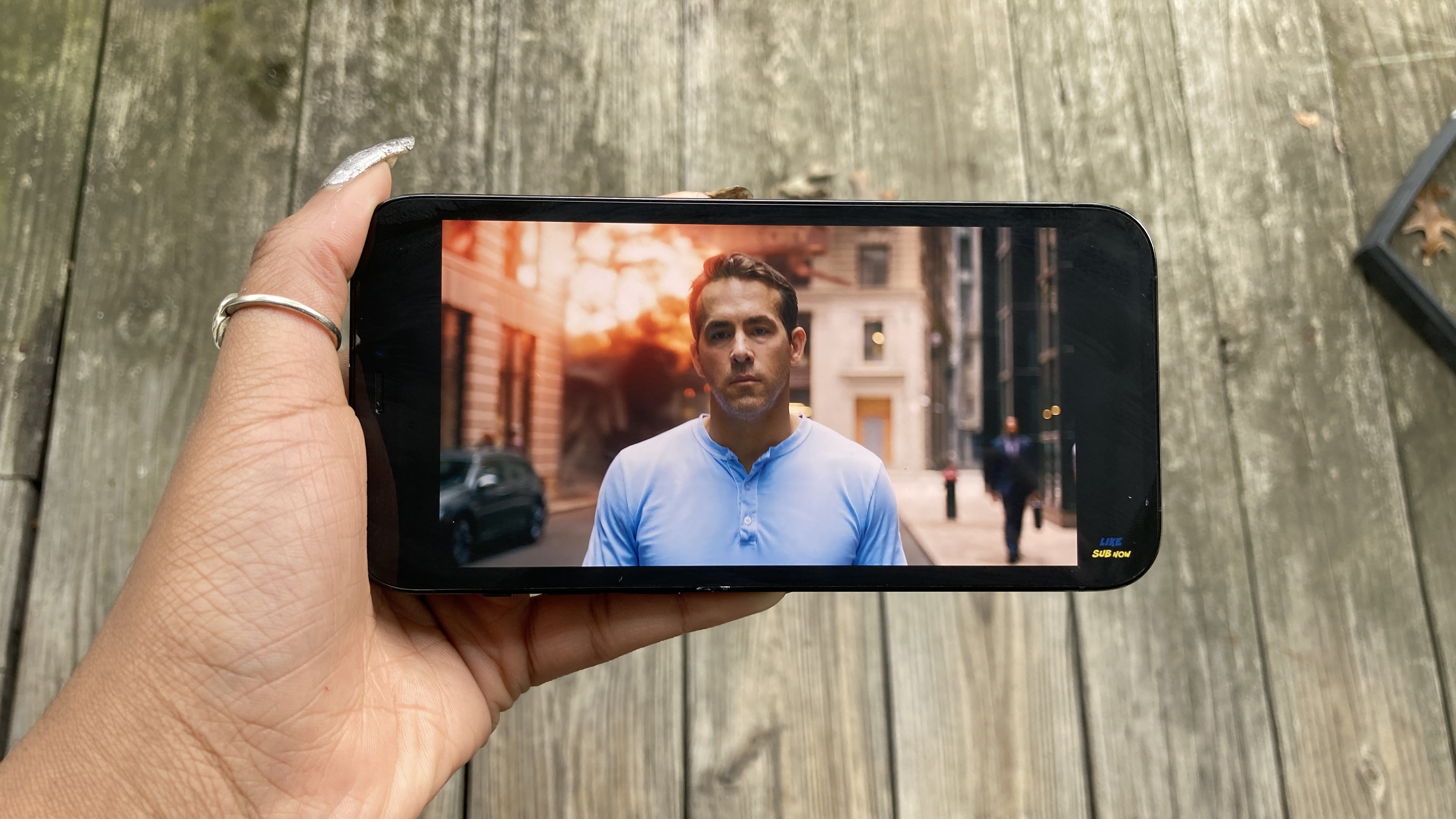
I watched the Free Guy trailer and I could spot flecks of gold hues in Ryan Reynold’s brown eyes as he was jolted awake by an alarm. As Reynolds walked through a vivid video game world filled with colorful neon signs and whizzing fireballs, the vibrant environment popped on the iPhone 12 Pro’s stunning display. However, I prefer my screens to be slightly larger, so I’d personally opt for the iPhone 12 Pro Max’s 6.7-inch display.
The iPhone 12 Pro, according to our colorimeter, covered 116% of the sRGB color gamut, which pales in comparison to the average smartphone (142%). The iPhone 12 Pro covers one percent more of the sRGB color space compared to the iPhone 11 Pro (117%). The Pixel 5 knocks the Apple smartphones off their pedestals with a color-coverage score of 128%, but the Galaxy Note 20 Ultra takes the crown (201%).
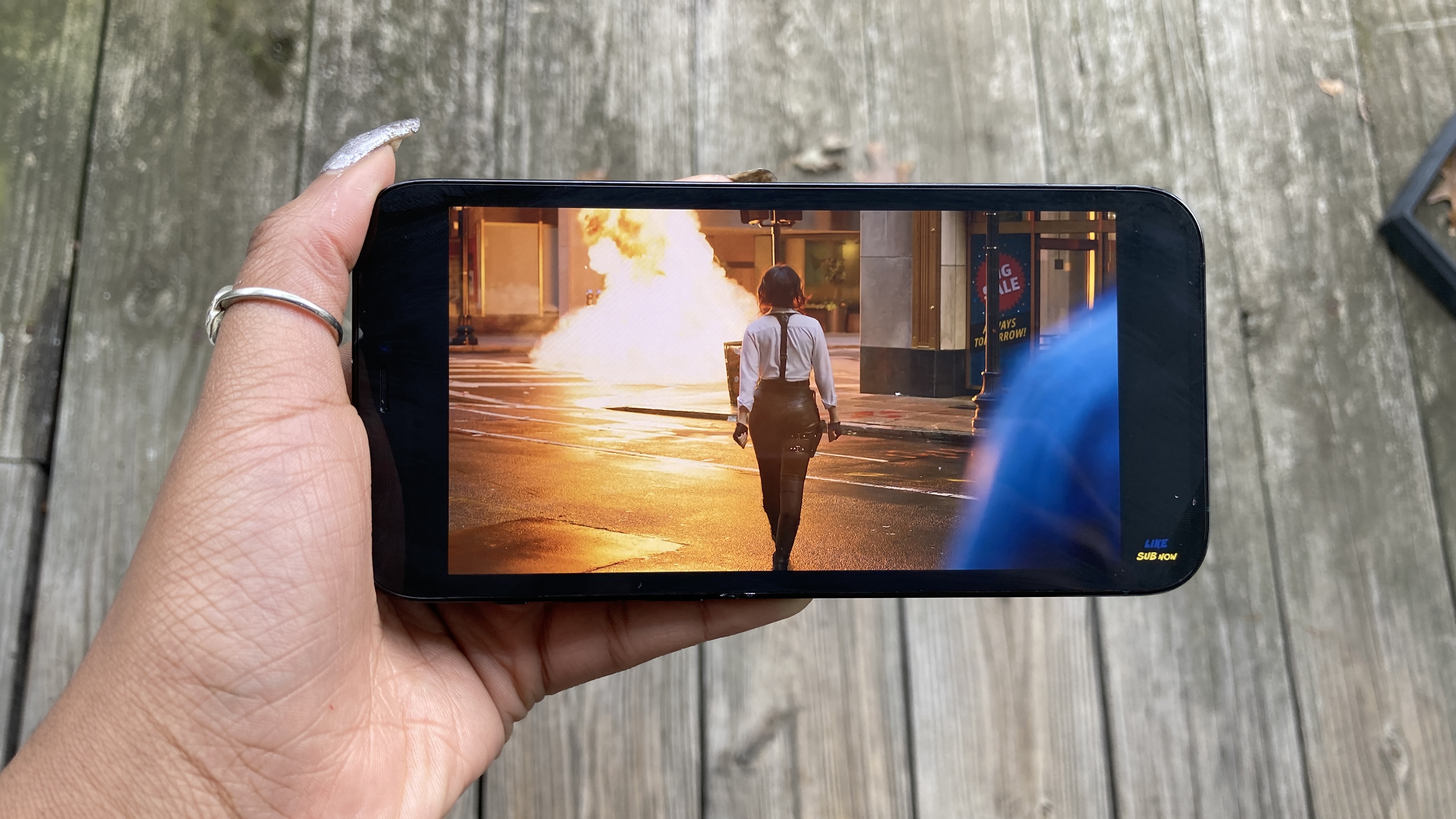
The iPhone 12 Pro will shine as bright as a diamond in any environment. The Apple smartphone has a brilliant 743-nit display, which crushes the category average (576 nits). The iPhone Pro 11 is slightly brighter than its successor (752 nits), but the Galaxy Note 20 Ultra is dimmer than its Apple rivals (663 nits). The Google Pixel 5 is the lackluster loser here, offering only 415 nits of brightness.
It’s also worth noting that the iPhone 12 Pro is equipped with a crystal-infused Ceramic Shield screen that increases drop performance fourfold. Apple boasts that the iPhone 12 line has the world’s most durable smartphone-glass display, and according to a recent drop test, this is true, but you’ll need to protect your smartphone anyway because that matte-glass back will still shatter upon impact.
iPhone 12 Pro audio
The iPhone 12 Pro’s built-in stereo speakers can be found on the notch and on the bottom edge of the device. Apple jazzed up the sound with Dolby Atmos support and 3D spatial audio.
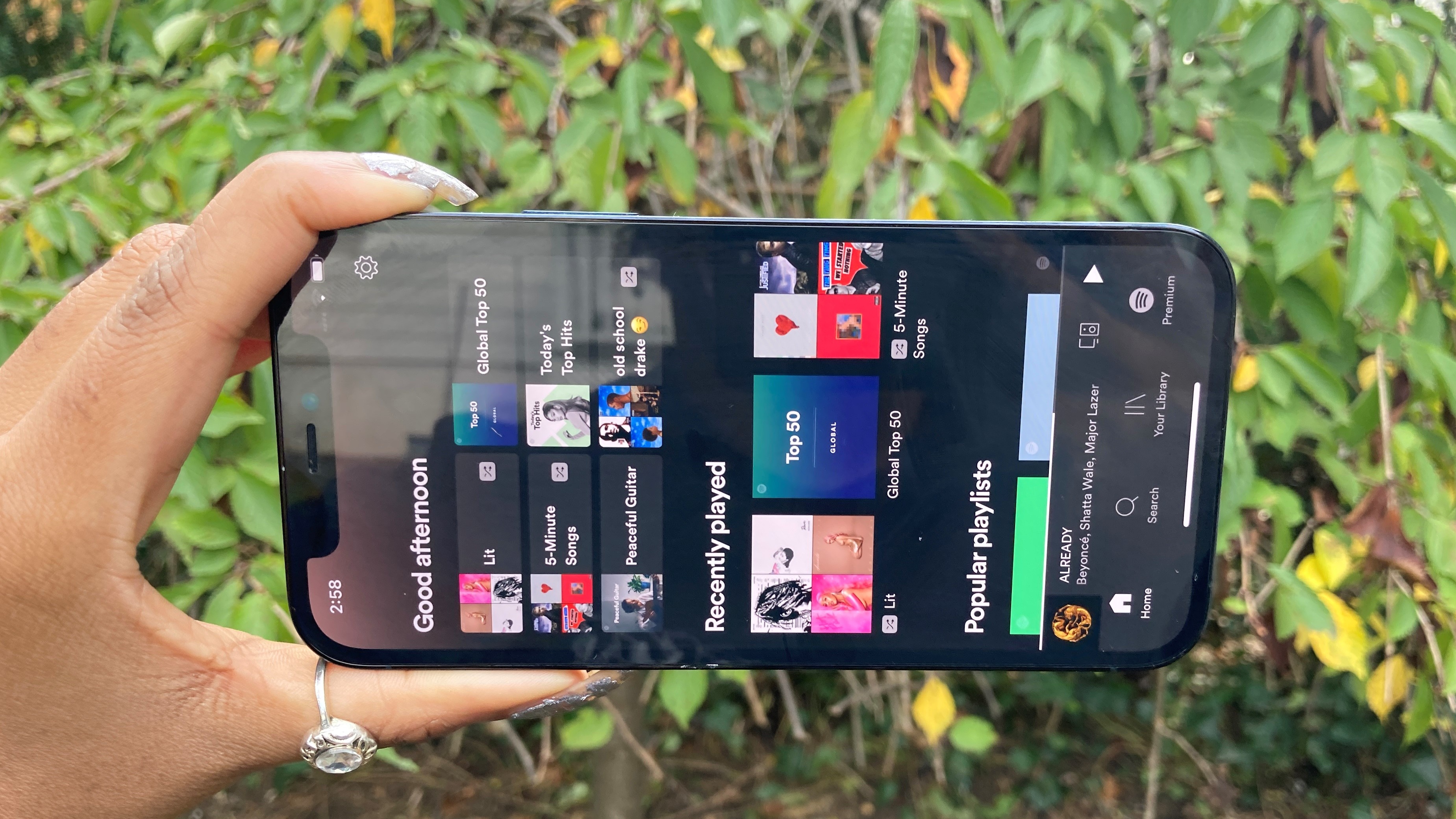
I listened to “Breaking Me” by A7S and Topic at max volume, and the iPhone 12 Pro’s speakers get pretty loud. A7S’s gritty, somber voice filled my medium-sized testing room. The electronic-dance song boomed on the iPhone 12 Pro with energetic beats, well-balanced sound and crisp vocals. Although audio sounds decent on the iPhone 12 Pro, it lacks the smooth, honeyed sound you’d hear on a good pair of wireless headphones. I’d recommend the Apple AirPods Pro as a companion to the iPhone 12 Pro.
iPhone 12 Pro performance
The A14 Bionic chip inside iPhone 12 Pro is aptly named due to its godlike dominance over other smartphone SoCs on the market. It’s the first chip built on a 5-nanometer process and it’s the world’s fastest smartphone chip to date.
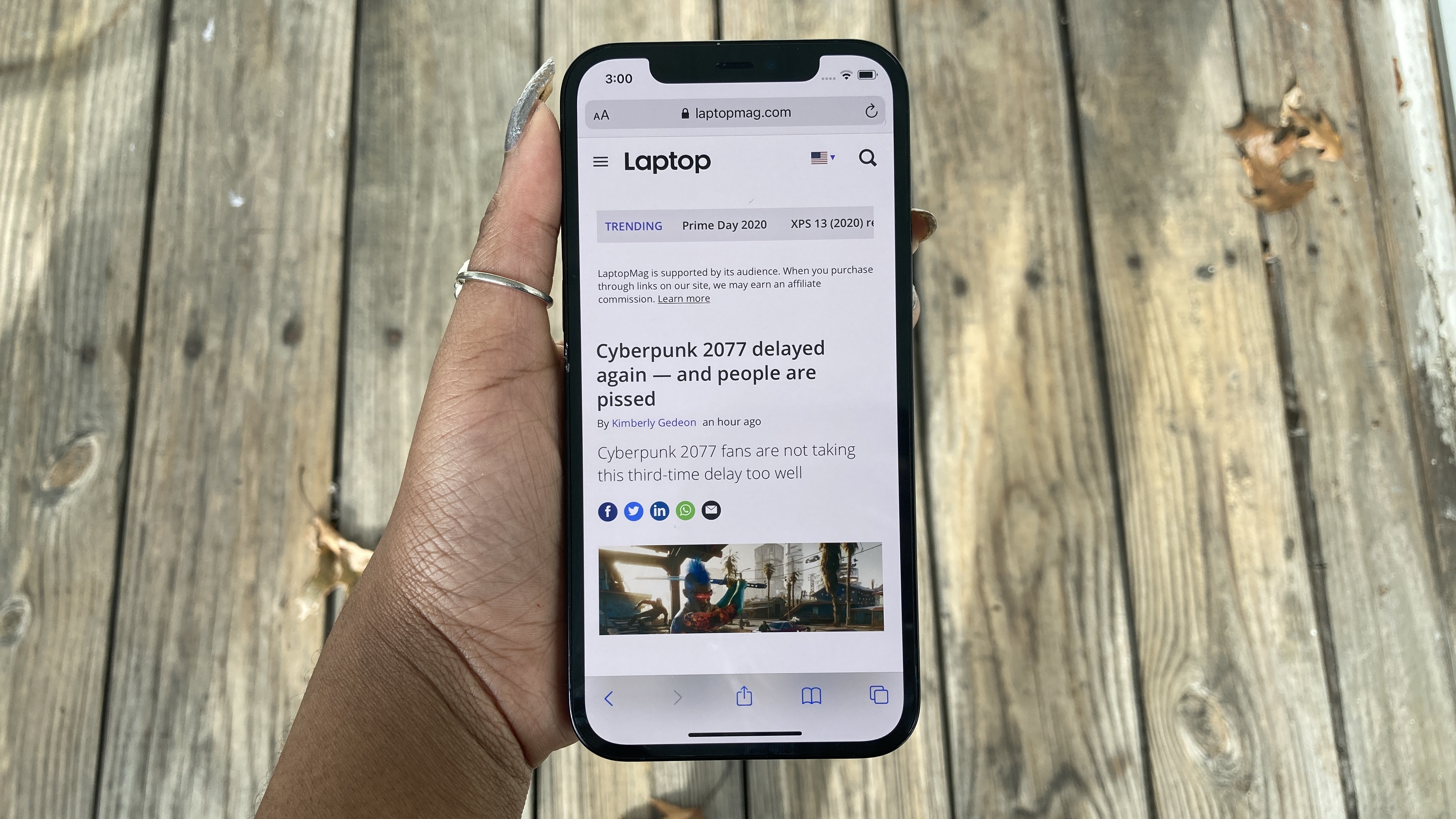
Equipped with 6GB of RAM, the iPhone 12 Pro had no problems juggling my disorganized, inundation of apps, including 15 Google Chrome tabs, two AR apps, Netflix, YouTube, Spotify and Apple TV.
On the Geekbench 5 overall performance test, the iPhone 12 Pro achieved a score of 3,669, which outpaced the category average (2,980). The iPhone 12 Pro also beat its predecessor, the A13-powered iPhone 11 Pro (3,509). The Galaxy Note 20 Ultra (3,294), powered by the Qualcomm Snapdragon 865+ CPU, and the Pixel 5 (1,617), packed with the Qualcomm Snapdragon 765G chip, could not keep up with the A14 Bionic chip.
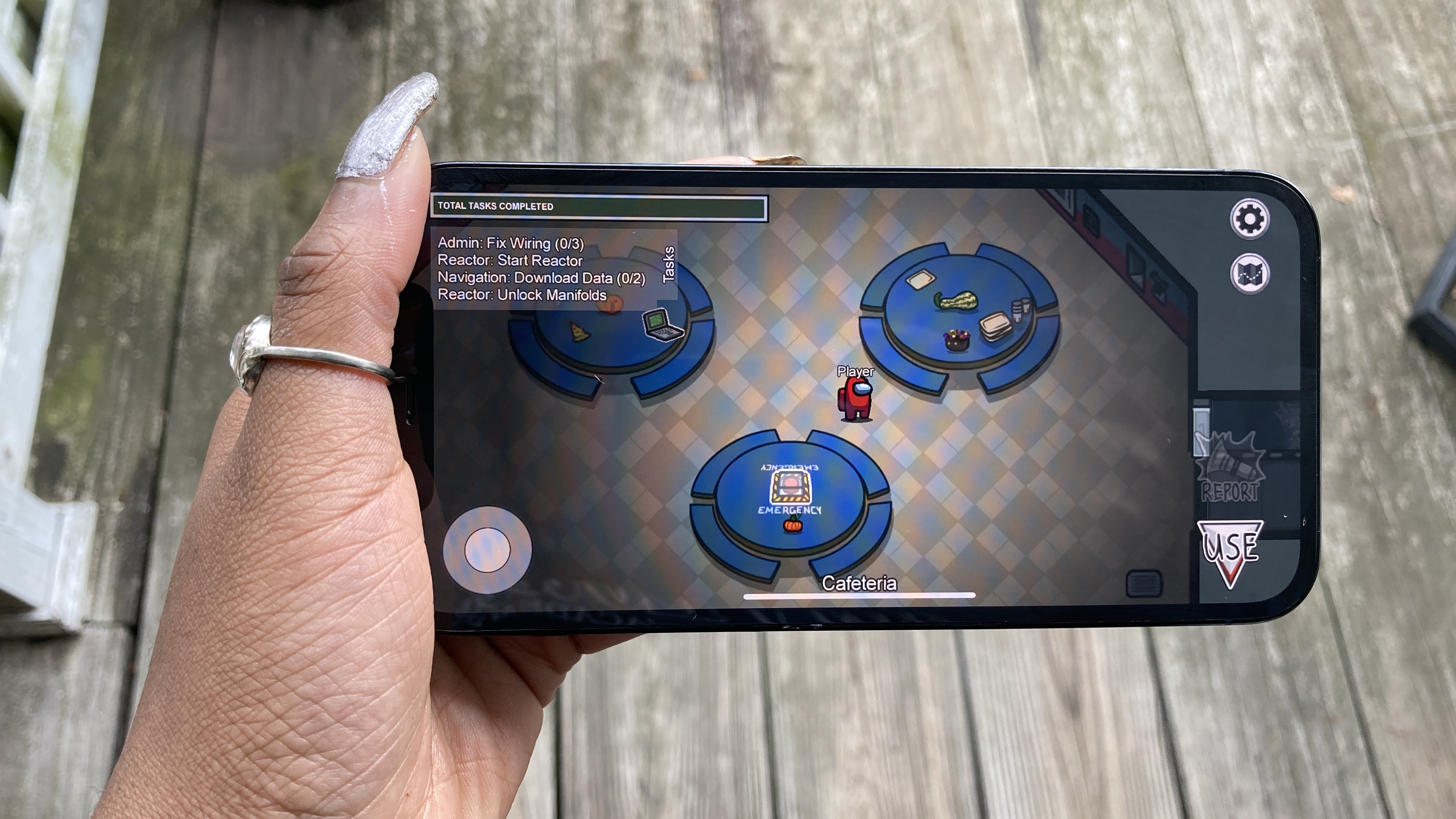
On the 3DMark Slingshot Extreme test, a demanding graphics benchmark, the iPhone 12 Pro served up a score of 5,139, which bypassed the category average (5,113) and the Pixel 5 (2,785), but the iPhone 11 Pro (5,367) and the Galaxy Note 20 Ultra (7,728) sailed past the iPhone 12 Pro.
Blink and you’ll miss it! In our Adobe Premiere Rush video editing test, the iPhone Pro 12 took just 27 seconds to complete a set of tasks, flying past the category average (54 seconds). The iPhone Pro 11 (46 seconds), Galaxy Note 20 Ultra (1:16) and the Pixel 5 (2:25) couldn’t keep up with the iPhone Pro 12’s breakneck speeds.
iPhone 12 Pro battery life and charging
Long battery life is a perk consumers often look for when purchasing a new smartphone. No one likes running out of juice while they’re out and about. On the Laptop Mag battery test (continuous web surfing at 150 nits on AT&T’s network), the iPhone 12 Pro survived for 8 hours and 15 minutes, which trails behind the category average (10:08).

The iPhone 11 Pro offers longer battery life (10:05) compared to its successor. The Galaxy Note 20 Ultra (10:38) and the Pixel 5 (9:53) also lasted about two hours longer on a charge. We explained how to lengthen the iPhone 12’s battery life here.
Apple has introduced a new way of charging the iPhone 12 Pro with MagSafe technology. The MagSafe wireless charging pad, sold separately, snaps on to the embedded, circular magnets inside the iPhone 12 Pro. Using MagSafe, the iPhone 12 Pro charged to 12% in 15 minutes and 29% in 30 minutes.
Now let’s address the pink elephant in the room — the iPhone 12 series does not ship with a power adapter. Apple does, however, provide a USB-C to lightning cable. For both the lightning cable and the MagSafe charger, you’ll need to own a USB-C power adapter to charge the iPhone 12 Pro. You can also opt for a Qi charging pad. The absence of a power adapter is irksome, and I’m not sure I believe Apple’s “save the planet” reasoning for not including it inside the box, but only Apple knows its true intentions.
iPhone 12 Pro cameras
The iPhone 12 Pro has three, 12-megapixel rear cameras. There is an ƒ/1.6, 1.4µm wide lens with dual-pixel phase detection autofocus (PDAF) and optical image stabilization (OIS). Next is an ƒ/2.0, 1.0µm telephoto lens that also sports PDAF and OIS, but also features 2x optical zoom. Finally, you’ll find a 120-degree, f/2.4 ultra-wide lens.

The 12-megapixel, f/2.2 front-facing camera is excellent for selfies and vlogging, and features Face ID.
One of the biggest selling points of the iPhone 12 Pro is the LiDAR scanner, which can measure the distance between the phone and the subject with lasers, providing better AR capabilities and enhanced low-light performance. The standard iPhone 12 model, by the way, does not have a LiDAR scanner nor a telephoto lens.
I took the iPhone 12 Pro’s cameras for a spin in my neighborhood. Take a look at some of the sweet shots I’ve captured.
Wide camera
The primary wide-camera lens, accessed through the 1x option in Photo mode, has a wider f/1.6 aperture, which lets in 27% more light compared to its predecessor. Inside Arthur J. Hendrickson Park, located in Valley Stream, there is a gorgeous lake with a flowing water fountain — I couldn’t help but take a picture of it.
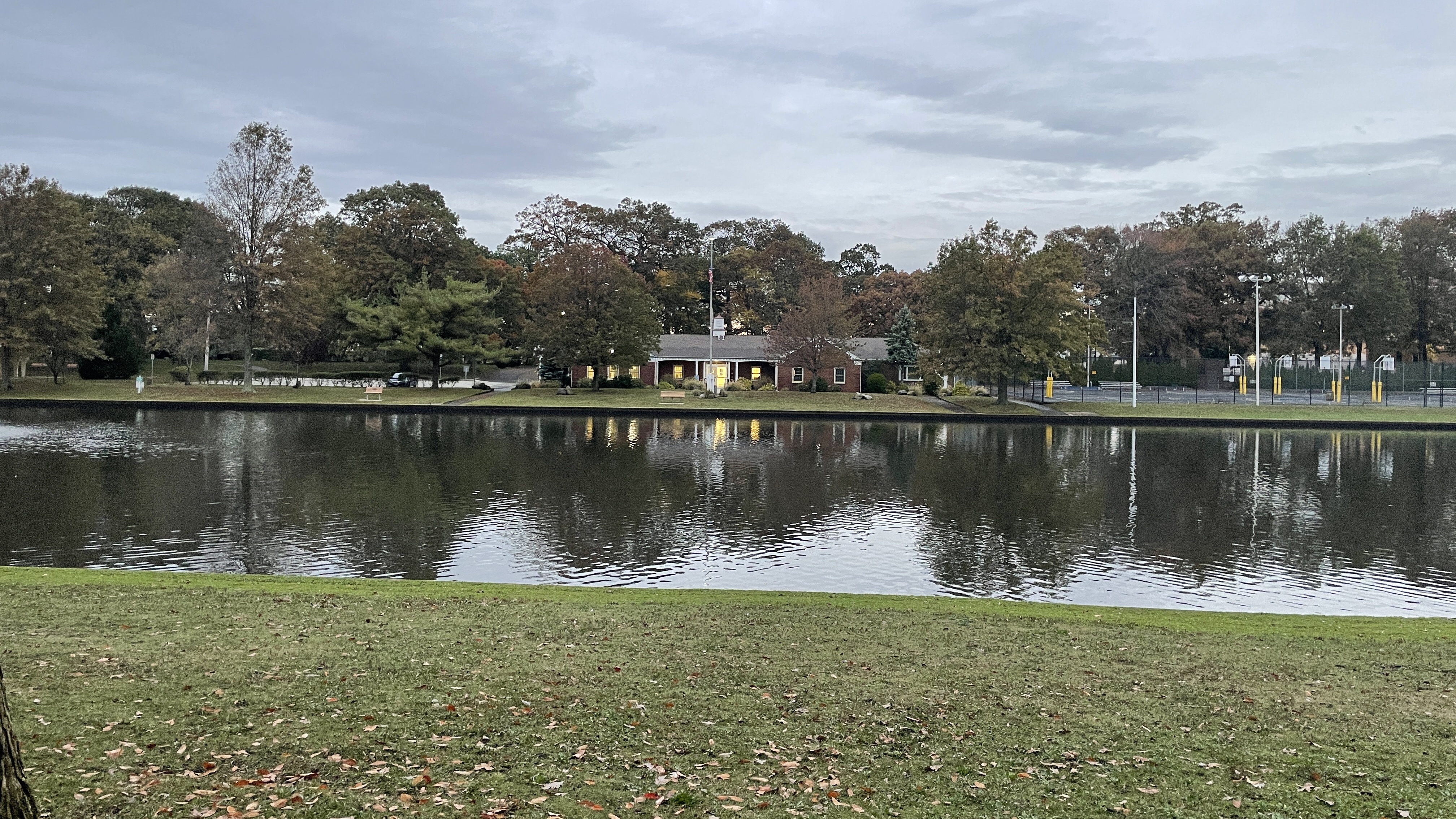
The wide-camera photo seemed to capture every droplet that exploded from the water fountain. You could also see the defined ripples caused by the cascading fountain. In the distance, you can see the brick-built Community Center surrounded by trees with different shades of green, yellow and purple. The picture was true-to-life, color-accurate and perfectly captured the fall ambiance of the Valley Stream park.
Ultra-wide camera
The ultra-wide camera is perfect for breathtaking landscape pictures. Using the same subjects, here are some impressive shots I captured with the ultra-wide, 120-degree camera.
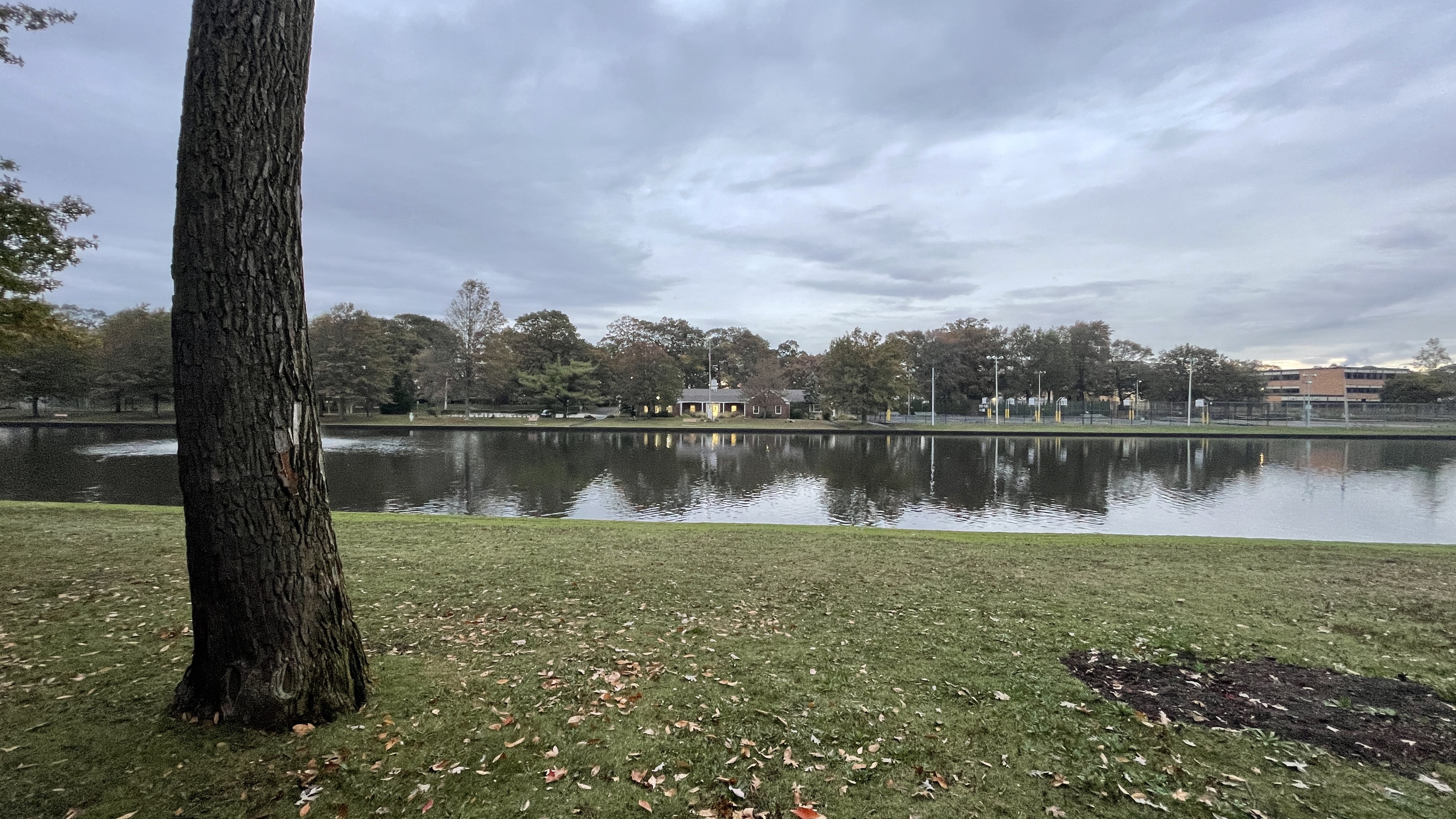
I took another photo of the Community Center, but this time with the ultra-wide camera, and the scenery is captivating. The photo captures the overcast, gloomy skies while depicting a panoramic-esque perspective of the lakeside Valley Stream park. The photo isn’t as sharp as the wide-camera lens photo, but that’s expected as it doesn’t feature PDAF nor OIS.
Telephoto
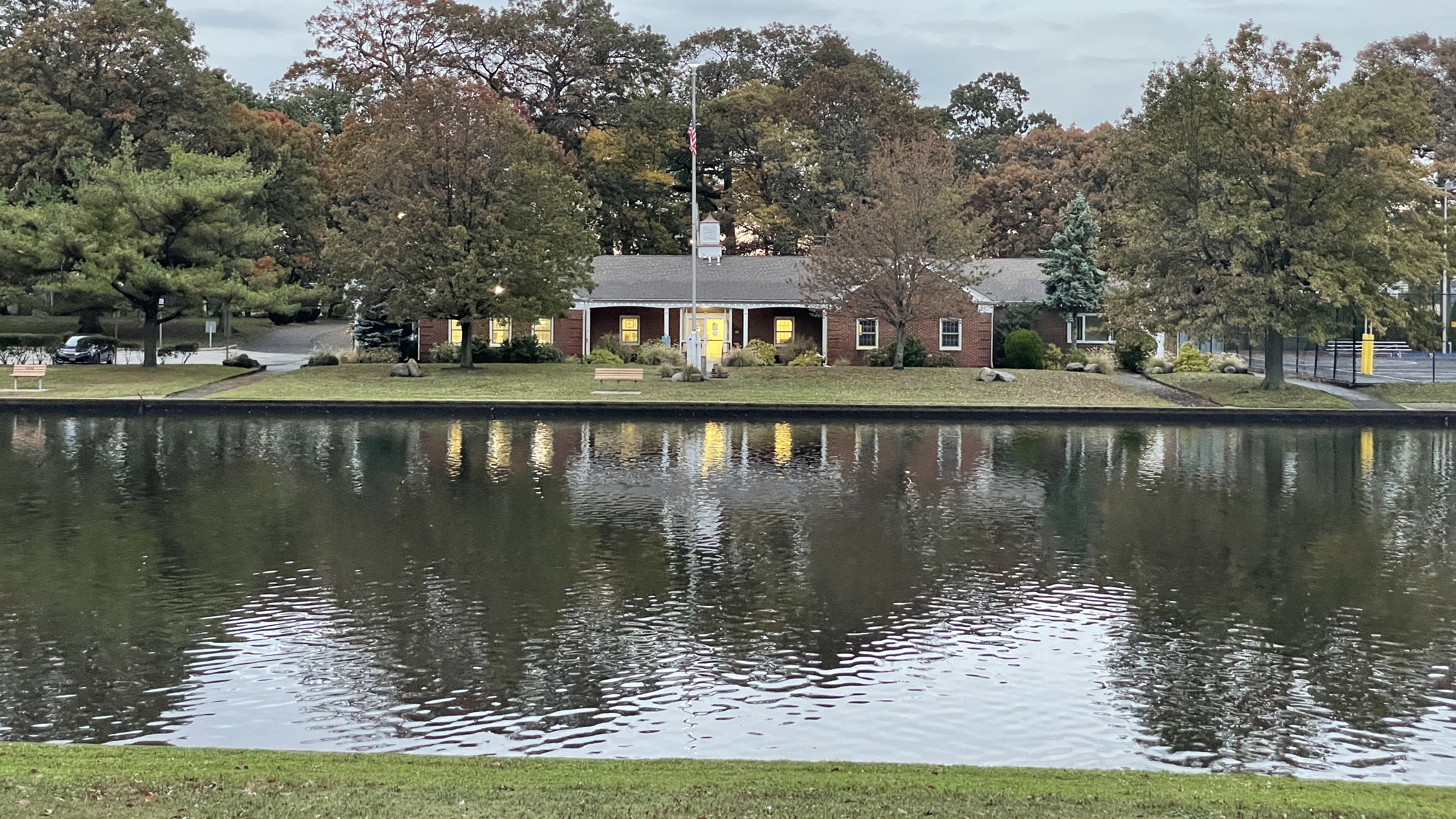
The telephoto lens offers 2x optical zoom for eye-catching portraits. Again, for comparison purposes, I took a picture of the Community Center using the telephoto camera, and I am convinced this lens is my favorite. Out of all the lenses on the iPhone 12 Pro’s rear three-camera array, the telephoto lens captured the sharpest, most detailed photos. With the telephoto lens, I can make out the brick details of the single-story structure, and after zooming in on the photo, I can even spot some flyers on the door.
Selfie camera
The 12-megapixel front-facing camera is optimized for selfies, FaceTime and vlogging. I experimented with the TrueDepth front-facing camera using Portrait mode, which allows you to capture photos with a sharp focus on the subject while the background is blurred. There are sub-modes in Portrait, including Natural Light, Studio Light, Contour Light, Stage Light, Stage Light Mono and High-Key Mono.

My favorite is Natural Light. It accurately captured the magenta shade of my lipstick, picked up on the tiny pores that populated my face, and shed light on all the lint that settled on my jumpsuit that I didn’t notice in real life. Studio Light is my second favorite, slightly smoothing out imperfections by illuminating certain areas of my face. Contour Light isn’t my cup of tea — it washes out my complexion and the selfie was overexposed. Stage Light completely blackens the background behind the subject, which could be useful for creative editing projects. Finally, there’s Stage Light Mono and High-Key Mono, which offers a black-and-white effect. It doesn’t tickle my fancy, but the iPhone 12 Pro’s camera continued to impress me by capturing subtle details on my skin.
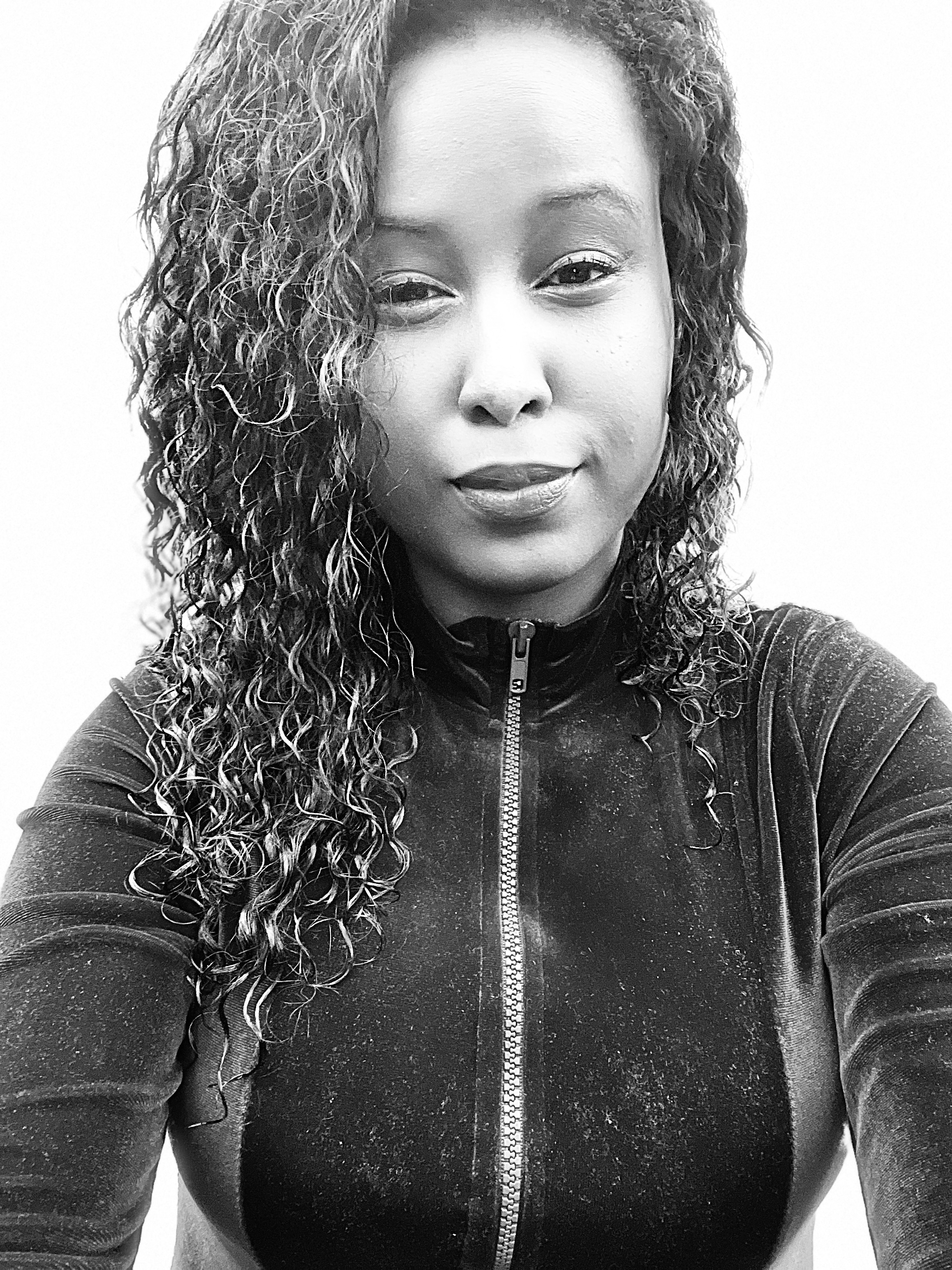
The front-facing camera also features Face ID, but due to these unprecedented times, I do wish Apple provided a fingerprint sensor instead of facial recognition for biometric authentication. Having to yank down my mask to unlock the phone is a tad inconvenient.
Night Mode
If you, like myself, enjoy nightlife or you frequent places with low-light conditions like restaurants and bars, you’ll need a smartphone with Night Mode capabilities, which the iPhone 12 Pro can fulfill.
The iPhone 12 Pro’s predecessor had Night Mode on the wide and telephoto cameras. With the current-gen iPhone 12 series, Night Mode has expanded to the front-facing camera and the ultra-wide camera. Apple’s Night Mode technology can automatically detect low-light conditions. You’ll then be prompted to hold the shutter button for a few seconds. The results are decent as long as you can remain as still as a statue. Otherwise, you’ll get some blur. Night Mode is impressive in that it can illuminate poorly-lit photos that would have been underexposed.

I took a photo of the Community Center in Night Mode using the ultra-wide lens and the results are stunning, capturing the perfectly-manicured, verdant lawn of the ranch-style building at sundown. The picture looks like a scene right out of a thriller — a beautiful, lakeside town with a sinister creature lurking in the dark waters.
Tech giants could reach Night Mode nirvana if smartphones could allow users to take low-light photos with faster shutter speeds, but for now, we’ll have to settle with 2020 technology.
LiDAR scanner and AR
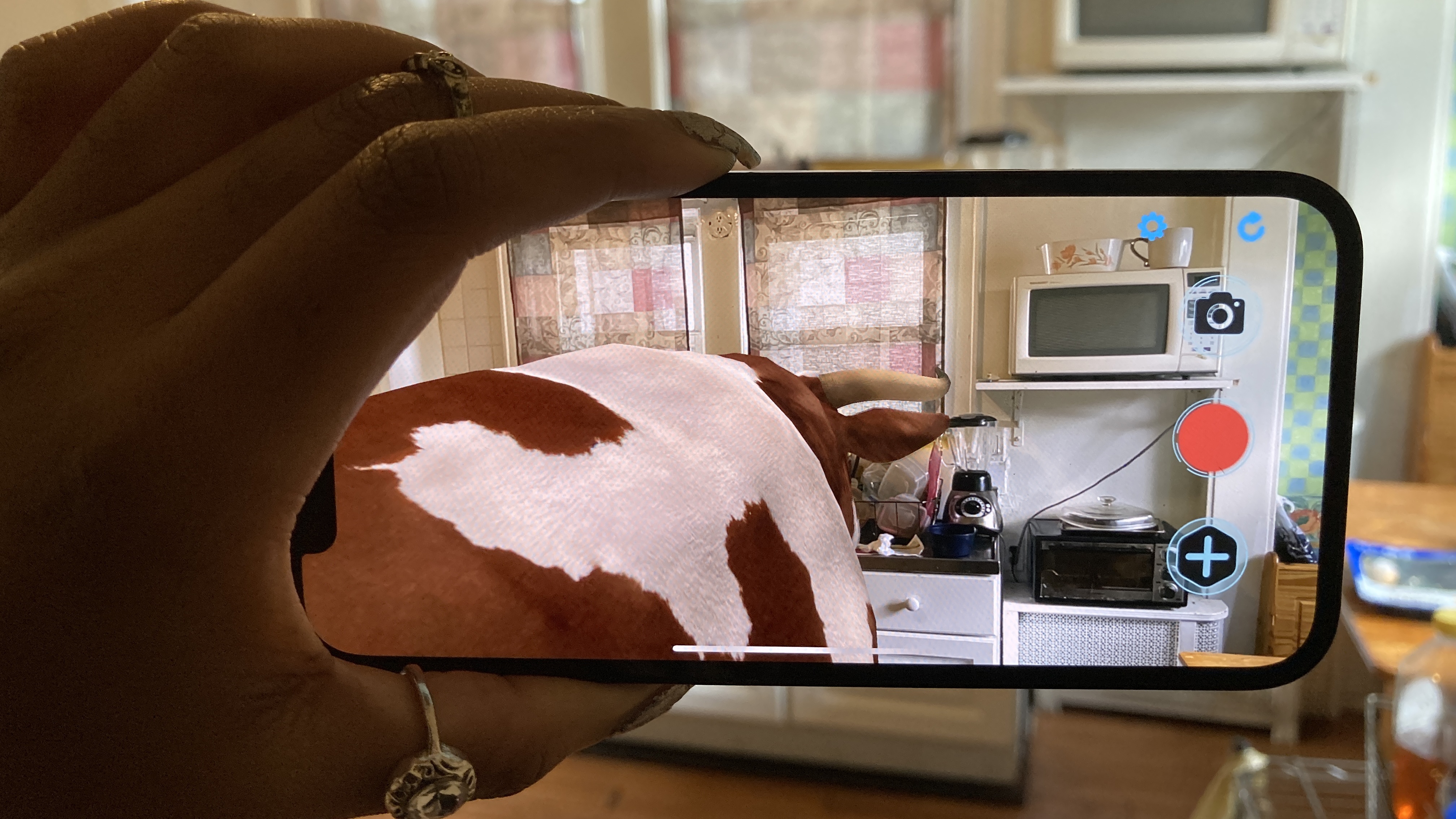
LiDAR spices up the iPhone 12 Pro’s cameras with faster autofocus for Night Mode and some badass AR capabilities. Out of all the perks, LiDAR is the one feature that made me say, “Take all my money!” to Apple. I cannot describe how much fun I’ve had playing with the ultra-immersive, LiDAR-assisted AR apps on the iPhone 12 Pro.
No, I didn’t put a humongous sofa that doesn’t fit in my dining room, but I used the LiDAR-assisted Wayfair app to simulate the presence of a sofa in my home. It’s pretty damn cool! For interior designers and folks who redecorate often, the iPhone 12 Pro is a must — many AR apps, powered with LiDAR, can provide accurate depictions of how well a home-decor product would fit in your home.
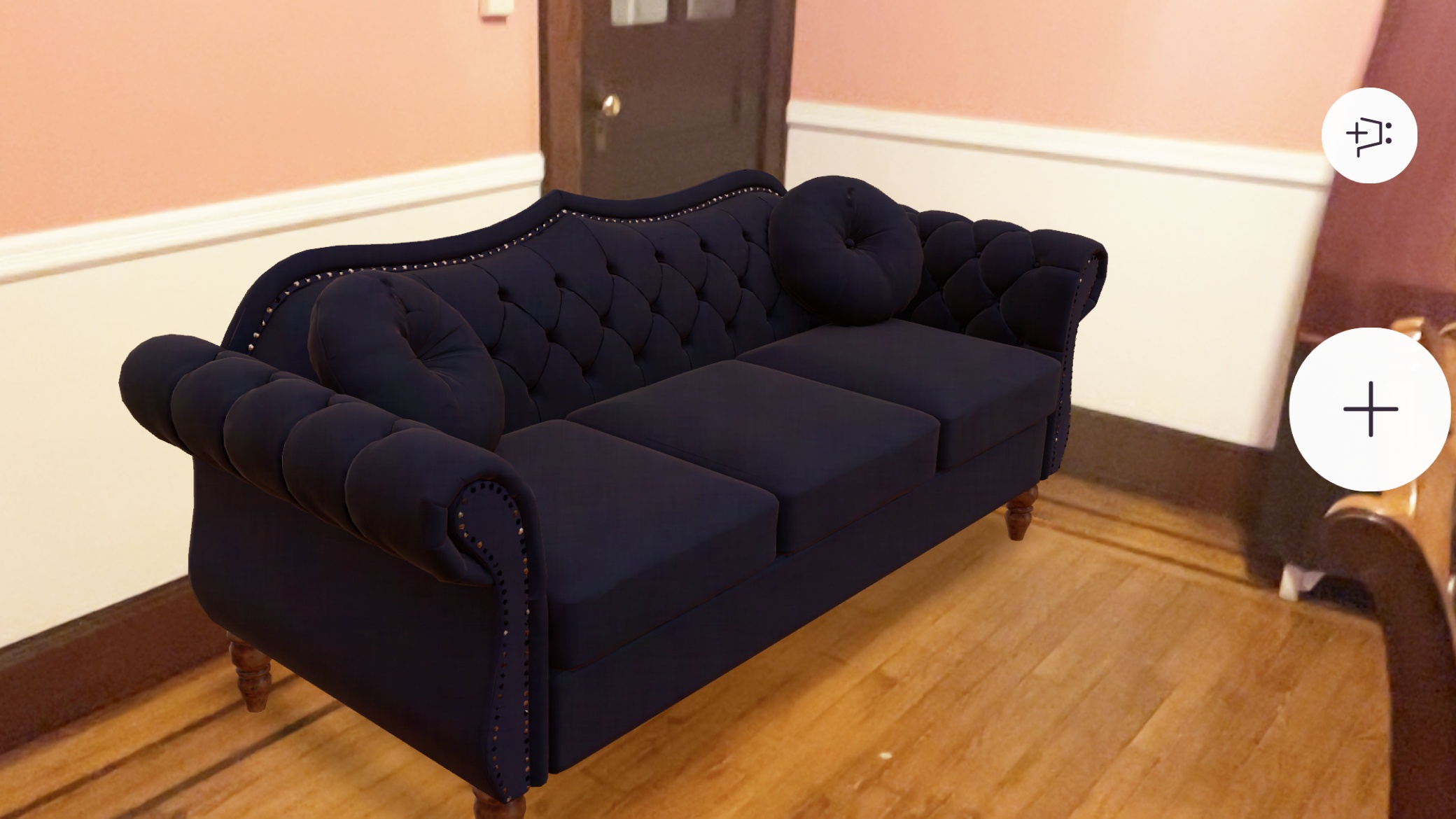
I also used the BigBangAR app — an educational, interactive app about the origins of the universe — to impel a miniature Planet Earth to rotate in my hallway. I could spin the figure with my finger (on the iPhone 12 Pro’s screen) and even walk around it to inspect different parts of the globe.
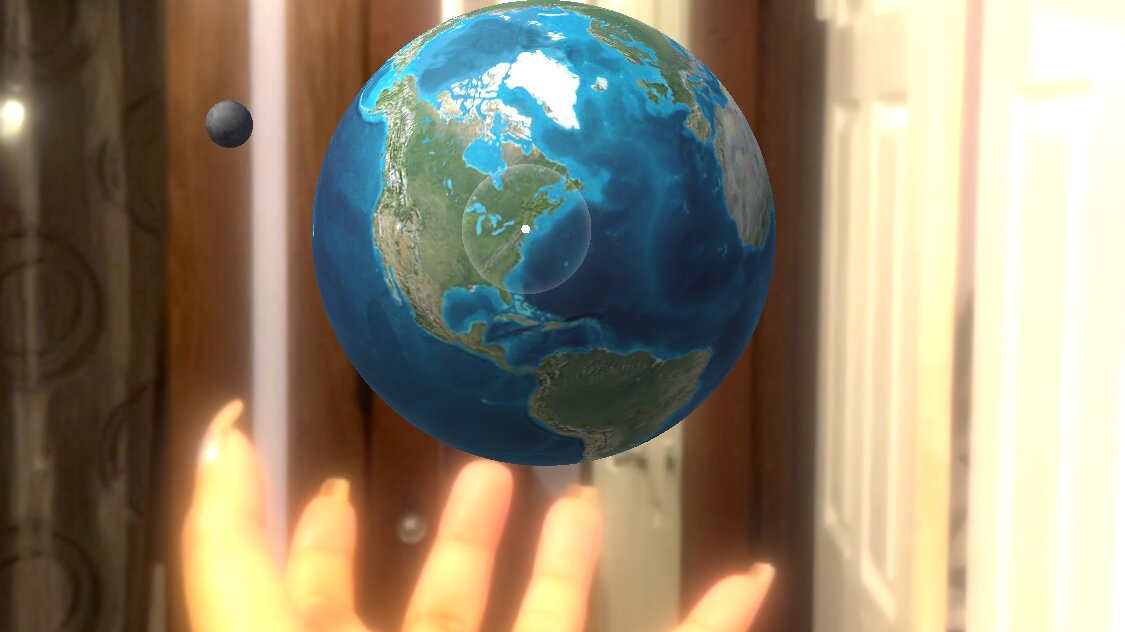
You can use the [AR]T Museum app to place famous masterpieces on your wall. On my dining room wall, I hung artworks such as Grant Wood’s iconic “American Gothic” painting and Paul Gauguin's "Bonjour Monsieur Gauguin."
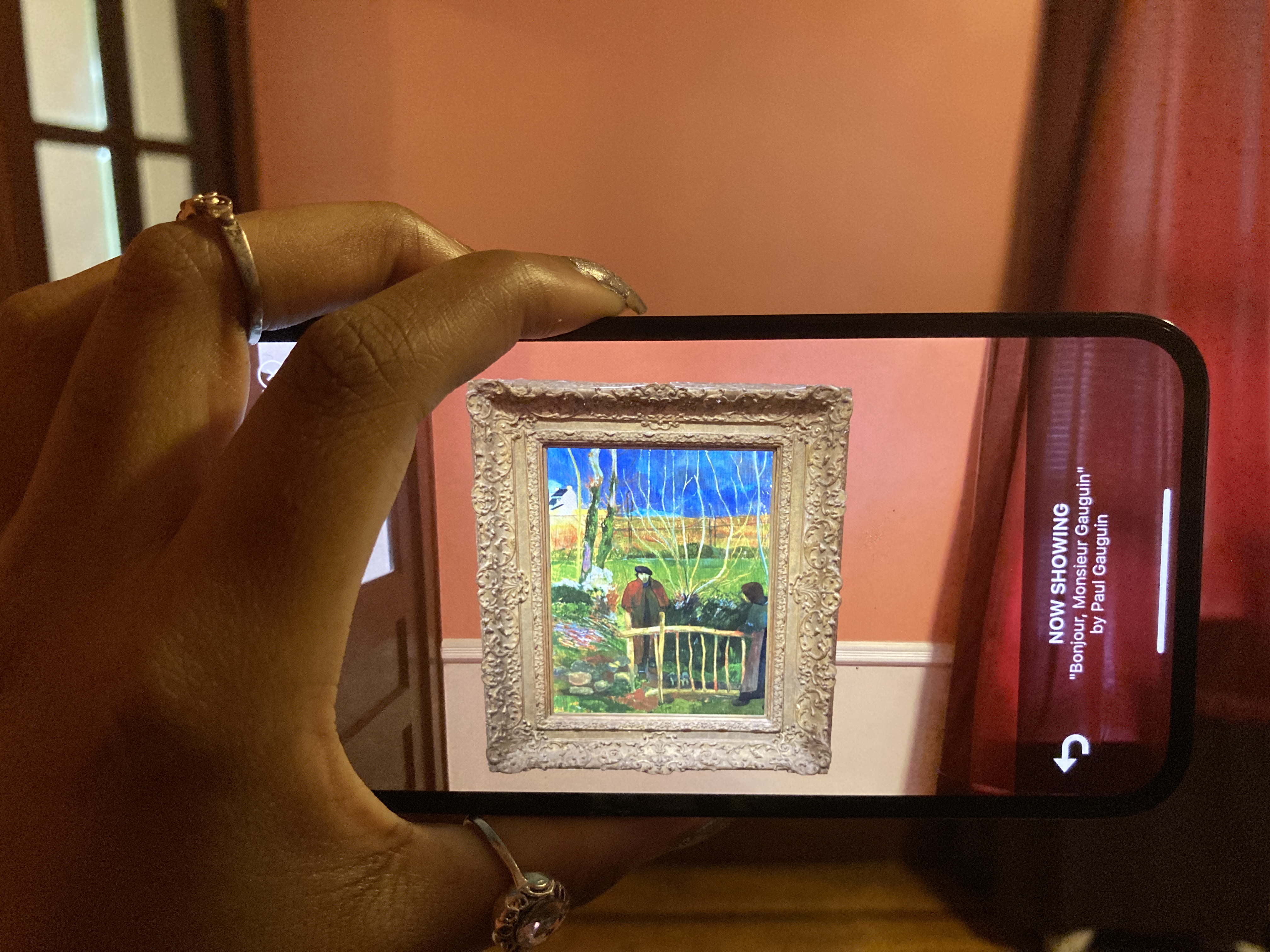
I used the InkHunter AR app to superimpose incredibly realistic tattoos on my arm. In the words of Jim Carrey in The Mask, “Somebody stop me!”

You can also play an immersive pet simulator game using the AR dragon app. You can play catch with your AR dragon; you can also feed it, train it, prompt it to do tricks and more. Each day, your pet dragon will grow larger and larger — right in the comfort of your own home.
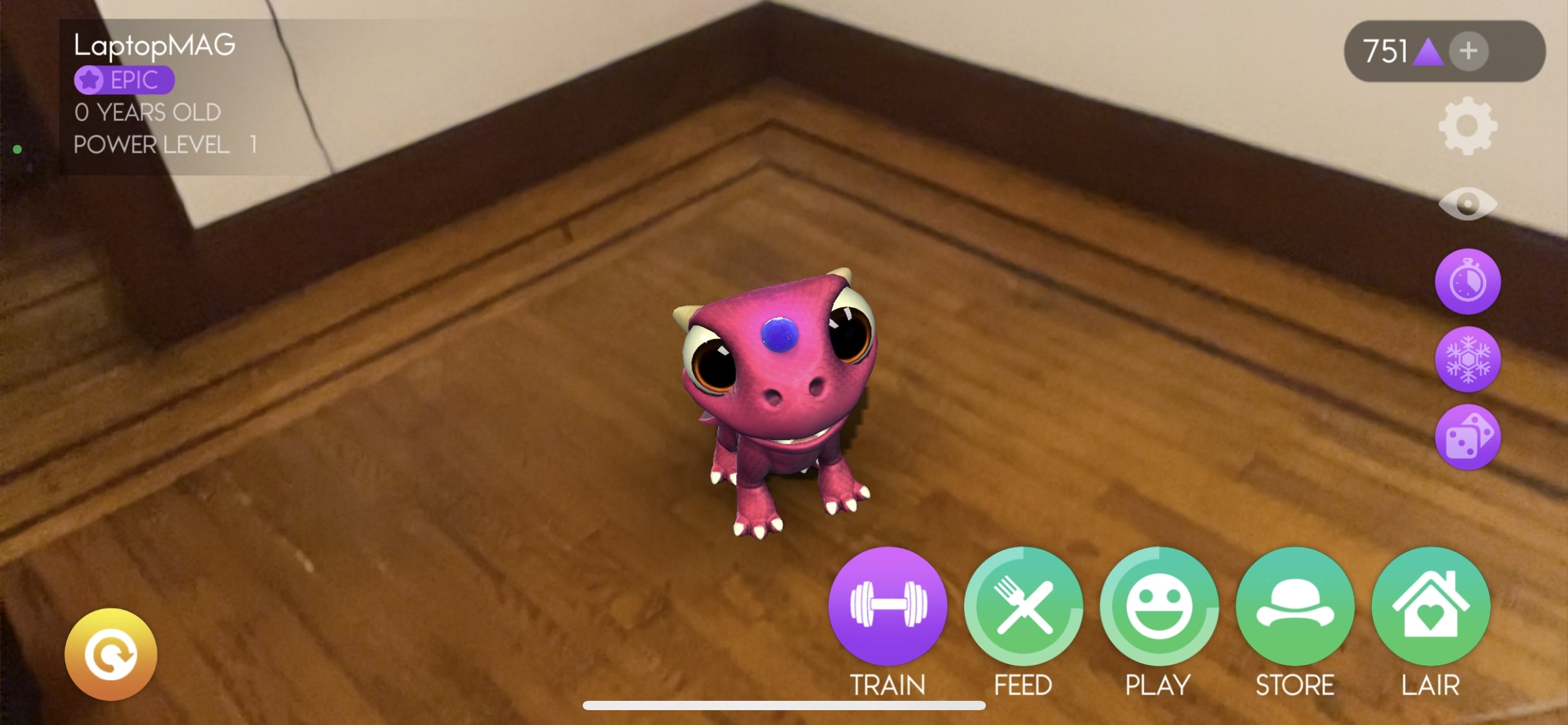
Finally, I used the ARvid app to summon a dinosaur — and hell, even a demon — into my home. LiDAR is the bee’s knees!


AR in the smartphone world is still in its infancy, but I look forward to seeing how this immersive technology evolves in the future, especially in regards to gaming.
Other camera features
The iPhone 12 Pro is the first smartphone in the world to feature 4K, 60 frames-per-second HDR recording, editing and sharing with Dolby Vision, a professional-grade, cinematic video format that provides life-like colors, rich blacks and brighter highlights. The device can edit Dolby Vision videos right on the device, which hasn’t been possible until now. I’m no filmographer, but I pretended to be a vlogger while using the front-facing camera — my videos were so crystal clear, they seemed tangible enough to touch.
Later this year, the iPhone 12 Pro will also feature Apple ProRAW, a format that will allow photographers to access unadulterated, uncompressed images — accompanied by Apple’s imaging processing data — for easy photo manipulation on software such as Photoshop and Lightroom.
Overall, the iPhone 12 Pro’s cameras won’t be as good as a DSLR camera, but for social media-oriented content creators who want to have a top-notch smartphone camera system right in the palm of their hands, the iPhone 12 Pro is the way to go.
iPhone 12 Pro software and warranty
The iPhone 12 Pro runs iOS 14, which was released in mid-September with a lot of fanfare. Apple iOS users gushed over the new home-screen customization, the novel app library, the cool picture-in-picture feature and more. My main driver is an Apple device, but in the past, I’ve had a few Android smartphones that were already equipped with iOS 14’s “new” features. As such, the update didn’t knock my socks off. Siri could also use some tweaking; Google Assistant is far smarter.

The iPhone 12 Pro comes with your typical pre-installed iOS apps, including FaceTime, Safari, Apple TV, Podcasts, Weather, Clips, Garage Band and More. Most importantly, you’ll have access to the Apple App Store, so you can fill your iPhone with all your favorite apps.
Some new software developments that might intrigue filmographers are that the iPhone 12 Pro can stream 4K Dolby Vision video to smart TVs via AirPlay. If you want to share your Dolby Vision content with friends and family via AirDrop, users with iPhone 8 or later (and A12-powered iPad or later) can enjoy Dolby Vision in all of its cinematic glory. All other smartphones and devices can still receive your AirDrop content, but it will likely be converted into SDR as opposed to HDR.
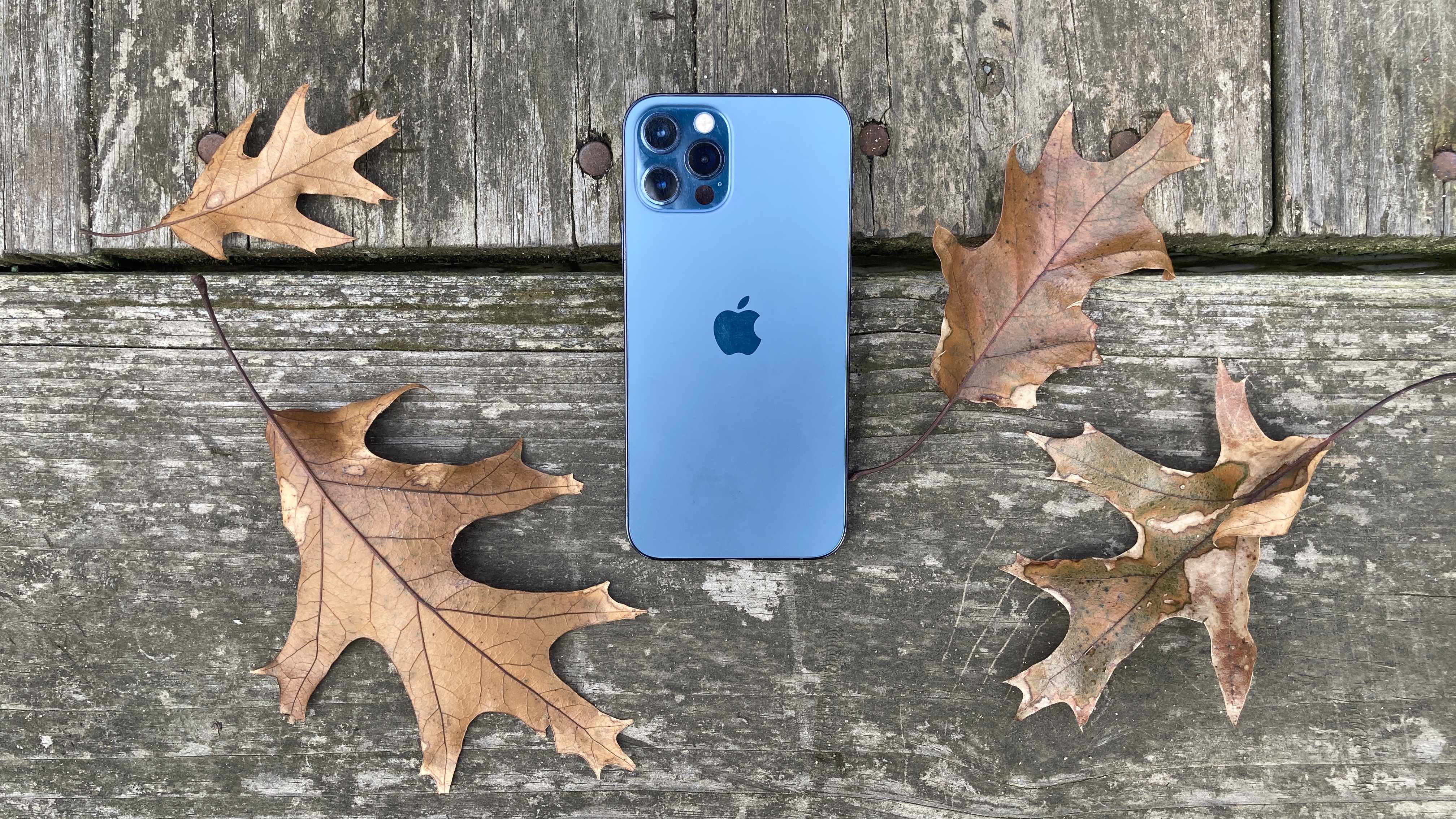
Lastly, let’s talk about the Facetime app. For the first time ever, if you have a 5G connection, you can make calls over cellular at 1080p. Without 5G, your resolution will regress to 720p.
The iPhone 12 Pro comes with a one-year limited warranty. See how Apple fared in Tech Support Showdown and Best and Worst Brands, our annual special reports.
Bottom line
So who is the iPhone 12 Pro for? This swanky Apple smartphone is for content creators with social-media fame aspirations who want to remain competitive on Instagram, Tik Tok and other platforms. It’s for filmographers who are dazzled by the thought of streamlined Dolby Vision video recording and editing.

It’s also for social butterflies who frequent low-lit environments for nightlife, thanks to the 12 Pro’s top-notch Night Mode feature. Lastly, it’s for anyone who’d enjoy the interactive, immersive, AR fun that comes with the LiDAR scanner. The AR capabilities, in my opinion, is the iPhone 12 Pro’s best selling point.
Apple has no desire to adapt to our world; it wants us to adapt to it. The iPhone 12 Pro is a device that wasn’t made for the present — it was created to thrive in the future. Sooner or later, 5G will become ubiquitous, AR games will sweep the nation and smartphone-created Dolby Vision content will become commonplace. By then, iPhone 12 Pro owners will be ready to thrive — not just survive — in a technologically advanced future carved by Apple.
Kimberly Gedeon, holding a Master's degree in International Journalism, launched her career as a journalist for MadameNoire's business beat in 2013. She loved translating stuffy stories about the economy, personal finance and investing into digestible, easy-to-understand, entertaining stories for young women of color. During her time on the business beat, she discovered her passion for tech as she dove into articles about tech entrepreneurship, the Consumer Electronics Show (CES) and the latest tablets. After eight years of freelancing, dabbling in a myriad of beats, she's finally found a home at Laptop Mag that accepts her as the crypto-addicted, virtual reality-loving, investing-focused, tech-fascinated nerd she is. Woot!
